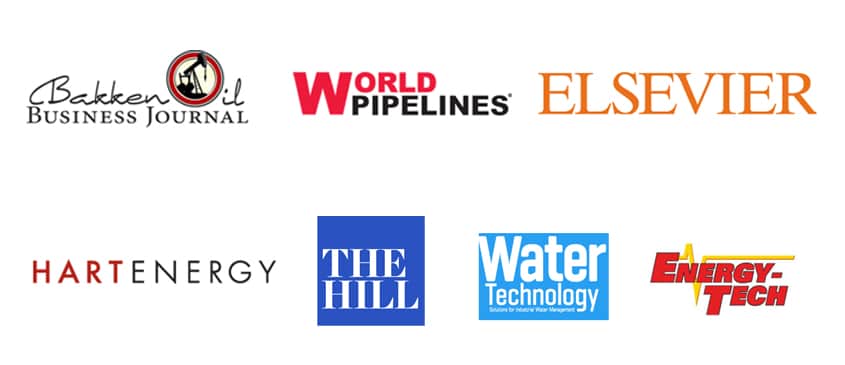Tag: Trade Editorial
Thought Leadership Editorial
Designing an Editorial Calendar You Can Actually Stick With – Part 1
Are you new to content creation? Having trouble keeping tabs on projects with multiple deadlines and lots of moving parts? Still looking for a good way to organize all your projects?
Designing an easy-to-use, effective editorial calendar is the key to creating consistent, successful content for yourself, your business, or your clients. It might also be the key to keeping your sanity in the process!
What is an Editorial Calendar and Why Do You Need One?
An editorial calendar establishes what projects need to be completed, outlines the workflow or tasks of each project, and helps you track the progress of those projects.
Editorial calendars have been used in the publishing industry for years to help magazine and book editors stay on top of their projects and deadlines. When you or your clients have an online presence and social media platform, an editorial calendar can help you create, publish, and track ongoing content.
Getting Started: The Main Parts of an Editorial Calendar
An editorial calendar can be as detailed as you need it to be. Some editors and project managers prefer to focus on the big-picture stuff like topics and deadlines. Others track projects down to the tiniest details, keeping tabs on things like keywords, audience profiles, click-through rates, social media shares, and more. Regardless of the level of detail and what format or program you use, there are seven key parts to an effective editorial calendar:
- The name of the project to be completed.
- The type of project, whether a social media post, blog, magazine article, book, etc.
- The purpose of the project (inform, announce, get sales, get leads, entertain).
- Tasks involved in the project and who is responsible for those tasks
- Where the content will be used, sent, or published.
- Deadlines for both project completion and publishing.
- Estimated time for each project and each project task.
Once you have the basic parts of your editorial calendar, you can expand on them as needed. The idea is to create the best calendar for you, one that is fluid so you can grow it as your content needs and projects grow. Need inspiration? You can click here to see some examples.

Creating and Using an Effective Editorial Calendar
The most effective editorial calendars clearly organize the tasks and timing of multiple projects in one easy-to-use tool. It also tracks the flow of each individual project to see progress and completion of the work at hand.
Use these eight time-tested strategies for getting your editorial calendar right from the start:
1. Use one calendar for all content projects.
No matter how many or what types of projects you are trying to manage, or if you have multiple people involved, use only one editorial calendar to track it. Keeping everything in one easy-to see calendar means you’re less likely to miss a deadline or overextend yourself or your staff. Using one editorial calendar also makes it easier to update and revise as needed.
2. Identify outside influences that may impact your calendar.

If you’re submitting content to an outside publication, you’ll make sure that your editorial calendar aligns with theirs. Depending on your company’s industry or area of expertise, your editorial calendar may be affected by current events, conferences and tradeshows, sales goals, product launches, and more. Make sure to identify these potential sources of conflict and adjust your schedule accordingly.
3. Plan your work, work your plan.
An editorial calendar should show your content plan as a whole, with an emphasis on when it needs to be done and who is in charge of doing it.
From there, break down each project further, showing every task involved from start to finish. This will help you allow enough time to complete the work involved with each task.
In most cases, each individual project’s tasks will include things like creating the topic idea, assigning the content piece, research, interviews, outline, draft, editing, photos, links and credits, approval of writing, proofing, and publishing.
4. Plan for the unexpected.
If you can, keep blocks of unscheduled time to add projects in or move them around as needed. The calendar should be a clear working plan but one that also allows for changes you may need to make in your projects and workflow.
5. Add key information.
Add to your calendar as you become more comfortable and consistent with using it. In addition to including basic information, you can start to add more details like keywords, audience, the number of social media shares, click-through rates, original publishing dates, how often the content was published and where, and spin-off ideas from the original content.
6. Decide how far ahead to plan.
Some content plans encompass a whole year while some may only go six months out. Ultimately, you decide what is appropriate for your goals. Going too far out in advance, however, can be overwhelming, especially if this is your first time using a content plan. Smaller timespans may be easier to stick to at first.
7. Develop a system.
Whether you use a spreadsheet, a calendar program, or a good, old-fashioned paper planner, it’s important that you have a way to easily identify the different elements of each project.
Create multiple tabs or areas on the single calendar based on the type of project, timing, or person assigned to the task.
Use color to identify projects, assigned people, timing, or tasks. Create notifiers or alarms so tasks don’t go missed. Flag or highlight important notes that your team can see.
8. Share and protect.
Make sure that your calendar is available to everyone on your team at all times – and that everyone is aware of important updates and changes.

Of course, there are risks to allowing everyone to access and update the calendar. It’s a good idea to take some steps to safeguard against accidental deletions or changes. Spreadsheets and other programs will allow for certain fields to be locked and still give others access and updating abilities. Allow for others to update their progress and make notes on the calendar but protect all the main fields such as headers, categories, critical projects, and firm deadlines.
The Next Step:
Now that you know how to create an effective editorial calendar that meets your needs, check out part two of this series to learn about the common pitfalls you should avoid when designing your calendar. You’ll also learn about some of the tools available to help you create this critical document for your content plan.
When marketing plans include targeting trade publications, you need pitch-perfect copy. Your standards are no less stringent – perhaps in even more so – for your company magazine, blog, or newsletter.
What a coincidence: The Writers For Hire provides the editorial brawn you’ve been looking for.

Our writers – all of them armed with journalism degrees and years of experience – prepare original, custom content that magazine editors love. Which means you get your finely-tuned message in front of an audience that wants to read it.
Unlike ordinary freelancers who are scared off by technical topics, our team has experience writing successfully about everything from undersea pipeline repair to bank-eligible hedge funds. They’re skilled at working with subject matter experts (SMEs) to get every last drop of essential information – ensuring your content has real substance to it. Our editors will make sure no fact is left unchecked and our project managers will keep everything on track. “Overdue” is not in our vocabulary.
Don’t need a trade article? Cool. We apply the same talent to blogs, op-eds, and other materials that will be published under your byline.
A Team of Experienced Journalists
With experience across a wide variety of industries and talent proven through placements in print, broadcast, and digital media – CBS News, World Pipelines, Men’s Fitness, and Bloomberg News, to name a very few – The Writers For Hire creates can’t-miss content that gets picked up, read, and shared, including:
Editorial Services and More
From start to finish, we support your goals by:
- Learning your business and target audience. Don’t worry, we’re quick studies.
- Helping you develop or hone content ideas.
- Interviewing your subject matter experts and third-party sources to ensure your article, blog, or editorial piece will be focused and relevant.
- Writing clear, tailored content that is reviewed, revised, edited, and polished until it shines (not that it didn’t sparkle to begin with).
Request A Quote
or
Call 713-465-6860
SME-Driven Thought Leadership
Thought leadership has helped super-majors, like Shell Oil, refashion their image from producer to high-tech energy solutions guru.
And it enabled DrillingInfo to shed the “data company” label and be seen as an industry intelligence leader. Saudi Aramco sponsors an annual global thought leadership forum; news source PennEnergy has launched a Global Thought Leaders Series on trends and technology. And those are just a few examples.
What is thought leadership? In his blog, Thought Leadership Marketing At the Age of Online Influence, Digital marketer and influencer marketing expert Ron Sela offers a helpful definition. “Thought leadership is the process of establishing a relationship with your customers and stakeholders and delivering something of value to them. During this process, you go beyond simply selling a service or product and establish your brand as the expert in the field, differentiating yourself from the competitors.”
Identifying Your Resources
If you’re planning to develop a thought leadership campaign for your company or organization, one of your most accessible sources of help is probably your company’s subject matter experts (SMEs)—people who have been practicing in their field long enough to develop deep knowledge about it. Not all SMEs are potential thought leaders, but most thought leaders are SMEs, writes Peggy Salvatore in The Difference between Thought Leaders and Subject Matter Experts. “A thought leader who is a SME with deep and broad knowledge is suited to lead many. A thought leader who is developing their expertise but willing to step out front will lead fewer. Both will have impact but one will have much greater influence on the future because they are speaking into many lives,” she writes.
There is a catch though: SMEs generally are busy people; they may be less than enthusiastic about supporting a thought leadership campaign, especially if it calls for a significant time commitment on their part.
Motivating your SMEs begins with developing a trust relationship with them, a relationship based on respect and empathy. And how do you do that?
First, Involve Them
Sure, encouraging SMEs to contribute their own ideas achieves buy-in. But what if their ideas aren’t on-point or aligned with your business strategy? Instead of promoting a free-for-all by asking your SMEs, “What do you want to focus on?” start with these questions:
- What are your customers’ most pressing issues or concerns?
- What regulations, industry news or trends are customers talking about?
- How have your ideas or insights helped solve a customer challenge?
Or consider gently providing topic suggestions: “Hey, Joe, I just read about such and such. Are customers thinking about this? How could we contribute to the conversation?”
”
Next, Make Writing Easier
Journalist Gene Fowler said, “Writing is easy: All you do is sit staring at a blank sheet of paper until drops of blood form on your forehead.”
Don’t subject your SMEs to that. If you want them to contribute white papers, blogs or speeches to support a thought leadership campaign, you’ll need to help your SMEs eliminate the blank sheet of paper (or monitor screen) by:
- Giving them concise guidelines, explaining what a thought leadership piece is not (it’s not an ad or a technical how-to), and including clear examples of what you are looking for.
- Providing a fill-in-the-blank template for SMEs who need a little more structure.
- Taking the time to write a short project brief, reiterating the three W’s: Who is it for? What are your points? Why should readers care?
Or, Don’t Make Them Write
A short disclaimer: asking your SMEs to write your thought leadership content isn’t always your best option.“When most subject experts write their own articles, books and other content, the insights can be underwhelming,” Robert Buday and Tim Parker of Bloom Group warn in their blog, Moving Your Firm Up The Thought Leadership Evolutionary Chart.
“The ironic thing is these professionals usually don’t lack unique expertise or impressive client work. What they do lack is an ability to develop nascent ideas sufficiently for publication and communicate them in a way the unenlightened can understand,” Buday and Parker explain.
Listen Carefully
If producing compelling copy for non-experts isn’t in your SMEs’ skill set, you may want to handle the writing yourself. In that case, you’ll need to conduct an in-depth interview with your SMEs.
“The SME interview is one of the most critical steps in the thought leadership content generation process, providing one of the few opportunities for substantive, direct interaction among the main parties in the effort,” thought leadership expert Bernie Thiel of Alterra Group writes in How To Optimize the Thought Leadership SME Interview.
Whoever is doing the writing, SMEs want a chance to communicate what they want to say in the piece so it ultimately reflects their best thinking and positions them well in the marketplace, Thiel says. “For writers, (the interview) the prime venue for gathering the key ingredients they need to shape the SME’s thinking into a strong, compelling piece of content. And for marketers, it’s an opportunity to ensure the project stays on time and results in a document they can effectively pump through the company’s marketing channels.”
If you’re strapped for time, you might prefer the option of hiring a professional writer to handle the interviewing and collaboration with the SMEs. Working with someone who will gather information and provide wordsmithing can make it faster and easier to develop high quality content.
Finally, Remember to Say “Thanks”
Once your thought leadership pieces are complete, resist the temptation to sprint off to the next to-do item. Remember to share the published or digital pieces with the SME. Forward positive feedback from clients and upper management; thank the SME in front of their colleagues. Not only does success feel good, it helps create commitment and future cooperation.
Interview: Answering Your Questions About Thought Leadership
“Thought Leadership” is a hot topic among marketing departments looking for content and companies looking to make a name for themselves within their industry. But what is it and how do you do it? In this interview on The Price of Business, Wintress Odom, editor-in-chief of The Writers For Hire, answers the basics about who should engage in thought leadership and why, what kinds of topics are best for creating thought leadership content, and how to actually build a thought leadership campaign.
Click the play button below to listen to the interview.



